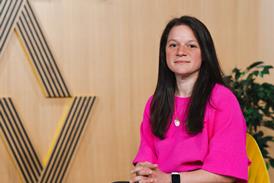The heavy losses of hurricane Katrina a year ago have triggered some distinctly illogical underwriting attitudes, says Martin Reith
Record-breaking July temperatures are another disconcerting reminder of how the world's climate appears to be changing. At least there is a sense of relief that fears of another violent US hurricane season have yet to be realised.
After two devastating years that culminated in the trio of Katrina, Rita and Wilma, the experience to date in 2006 is relatively "normal". Of course, this upbeat observation could yet be rudely upset. The season is not yet halfway through and Mother Nature waited until late August in the previous two years before unleashing her full wrath.
There have been enough stark reminders over the same period that natural catastrophe is not confined to North America. The Indian Ocean tsunami on Boxing Day 2004 and the Kashmir earthquake last October were the most devastating examples. Rather less publicised than Katrina and its successors, south east China has suffered a ferocious series of typhoons this summer, leaving 1,700 deaths and nearly $20bn-worth (£10.6bn) of damage in their wake. Typhoon Saomai, which hit only days ago, was the most powerful to strike the country in half a century.
By contrast, Europe has merely flirted with disaster. Winter storm Erwin early last year caused $2bn (£1.06bn) in insured losses, but compared to Katrina the bill was modest.Central Europe was hit by flooding last August while fast-melting snow threatened a repetition this spring, yet the losses were not on the scale of those experienced four years ago.
Britain in the past two years has experienced flash-flooding in Boscastle, a deluge in Carlisle and a 135mph tornado in Birmingham, but the damage each time was restricted to a relatively small area. Plans to push ahead with building new homes and businesses on flood plains suggest these relatively 'minor' disasters will be succeeded by something far more serious.
Unconcerned
For the insurance industry, these local difficulties appear relatively minor in comparison to the $58bn (£30.7bn) bill resulting from last year's trio of Katrina, Rita and Wilma - an attitude reflected in its underwriting.
However, Lloyd's report on climate change, issued earlier this summer, warned that the anticipated increased frequency of violent storms would be worldwide and not restricted to the Atlantic.
It cited record typhoon seasons in Asia (before this summer's onslaught was properly underway) and last year's tropical storm Vince - the first to make landfall on the Iberian Peninsula.
The report also forecast that other previously low-risk or hurricane-free areas could become more vulnerable and warned of the inadequacy of current capital and pricing models.
Yet the report appeared against a background of softening property rates for business outside of North America, even in catastrophe-prone areas, as insurers compete for uncorrelated exposures.
Underwriting standards can still be extraordinarily lax, with some companies ready to accept only minimal information if it provides a competitive advantage.
A growing imbalance
By contrast, shortage of capacity is pushing US catastrophe ('CAT') rates steadily higher to levels that could prove unsustainable. Something will eventually have to give to correct this imbalance.
Some hold the view that this year's more subdued hurricane season will hasten the correction, with buyers arguing that two appalling years in succession were a blip as they push for lower prices.
It is hard to be convinced by their argument. The US property market has lost significant capacity in the past year.
Capital market solutions have also proved to be a palliative, with new developments, such as insurance special purpose vehicles, dubbed 'sidecars', helping to ease the shortage. They are a development that Ascot has followed with interest and are a highly efficient route for investors to tap into the insurance sector's top underwriting talent.
Nonetheless, CAT capacity remains short, and is likely to stay so in the near term even if America's vulnerable states are spared a major windstorm for the rest of this year. Ascot and some of its peers have revisited their risk models and made them more sophisticated, while controlling risk exposure through higher premiums, tighter conditions and the application of sub-limits or aggregate limits for CAT risks. But too many others have simply hoisted a 'closed for business' sign.
With only a limited choice of players in the market, which are subject to more stringent capital requirements from the ratings agencies, Katrina could mark the end of the industry's tradition of soft market and hard market cycles. The situation is very different from 1992, when Hurricane Andrew encouraged a new wave of entrants.
It would be good to report that London is taking the opportunity to fill the resulting vacuum. More US CAT business should be heading this way as insurance becomes steadily more commoditised and pressure on margins increases. But the figures suggest that, if anything, the volume is slightly down on a year ago.
London now has to compete with local markets that have emerged across the Atlantic, particularly around the Gulf Coast, which bore the brunt of Katrina. Houston has emerged as an important centre, offering the local energy market $750m (£397.5m) of capacity and players large enough to assume significant amounts of risk.
In this environment, Lloyd's risks punching below its weight and ending up with business that the local market is unable to accommodate or does not want. Ascot believes that a local presence in the US is increasingly important, to access markets that may otherwise remain closed if we rely entirely on brokers.
We can offer the tradition, the security and the underwriting expertise that increasingly complex risks require, but we need to set out our stall where buyers can see it and also attract the non-capacity "counter balance" risks.
There is still a tendency for Lloyd's to be regarded as a single entity across the Atlantic, which can hamper our efforts in accessing new business.
North America is only part of a wider geographical reach. Ascot seeks to be more evident in the Asian market. An office in Singapore is under consideration as the logical next step in taking our products to the rest of the world.
Proactive thinking is vital in today's challenging market. Insurers and reinsurers that merely react to a fast-changing world will quickly find their business seeking a home that offers nimbler minds. IT
' Martin Reith is chief executive of Ascot Underwriting





































